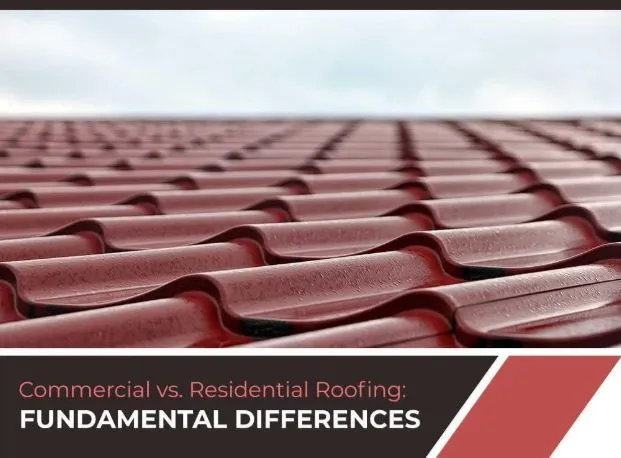If you own both residential and commercial roofing properties, you should know that aside from protecting your property from the elements, both roofing systems are different from each other and therefore have different requirements. Fortunately, there are roofing contractors that can install, repair and maintain both roofing types. As one such contractor, Exterior Building Solutions gives you an overview of the key differences between both types.

Roofing Slope
The fundamental difference between residential and commercial roofs is in the roofing slope. Building size influences this difference: ideally, roofs should have steep slopes because they effectively shed rainwater. They are also visible from the ground and from a distance, which can significantly boost a building’s curb appeal. A typical residential property has just the right size to accommodate such roofs.
The same kind of roofing would not be practical to maintain, let alone build, on commercial properties for several reasons. While factories and warehouses do have sloped roofs, these buildings do not require controlled interior environments and are an exception to the rule. A sloped roof would also be vulnerable to high winds and wouldn’t be visible from the ground anyway, so a sloped roof would not be as beneficial.
Roofing Materials
With the slope comes the choice of roofing materials. Typical residential roofing materials like asphalt shingles, metal and slate are suited for steep slopes while typical commercial roofing materials come in sheets of membrane, such as TPO or EPDM. Traditional commercial roofing like built-up roofing (or BUR also known as “gravel roofs”) are still in use because of their resistance to foot traffic and wind uplift. The frequency of required commercial or residential roofing service, such as repairs and maintenance, varies with the roofing material.
Roofing Structure and Installation
Ultimately, the slope and materials decide the installation process. Residential roofs require a peaked structure. Boards of wood or similar material are attached to trusses, which function as the roof’s “skeleton.” A waterproofing layer called an underlayment is installed, followed by the outer roofing material and other accessories.
Commercial roofing, on the other hand, is installed onto layers of metal and insulation. Membrane roofing is installed using a combination of nails, heat welding and adhesives. A slight, calculated slope is necessary to avoid pooling water and allow rainwater to flow straight onto the gutters. Whatever roofing system you ultimately choose, Exterior Building Solutions is your one-stop-shop for both roofing types.
If you would like to know more about our residential and commercial roof installation services, call Exterior Building Solutions today at (314) 470-8783. You can also fill out our contact form to schedule your free, no-obligation estimate. We are located in St. Louis, MO, and serve nearby areas.

0 Comments